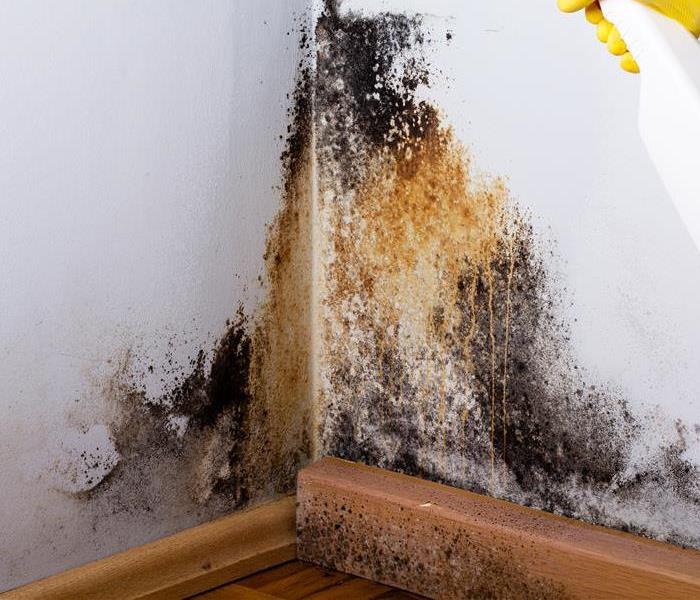Establishing Proper Containment During Mold Remediation
9/14/2021 (Permalink)
There are many steps that mold remediation professionals take in your home in Englewood, FL, to get rid of mold contamination. One of the first things they do is to seal off the area. Proper containment of the affected items and areas is essential. It prevents the spread of mold into other sections of the home and thus keeps the problem from getting larger.
Item Isolation
All materials that are at risk of contamination must be separated from the home. For example, if the problem is in your children's bedroom, technicians will bag everything that is wet, moldy, or musty:
• Bedding
• Stuffed animals
• Toys
• Clothing
• Shoes
• Books
Everything must be contained in plastic, sealed bags. If the items can be salvaged, they are cleaned and returned to the home once the whole remediation process is done. If they cannot be salvaged, the bags keep the mold contamination from spreading so you can dispose of them as you would dispose of regular trash.
Air Flow
Mold spores are airborne, so cutting off airflow in your home is vital to keeping a mold problem contained. Turn off the HVAC system and all fans. Close all doors and windows that allow air to circulate throughout your home. Try not to give the multiplying mold spores a free ride to a new destination.
Location Seal
Finally, the contaminated area must be sealed off. Specialists use sheets of polyethylene to line the area, sealing the seams with duct tape or some other industrial adhesive material. The only openings in this covering are the slits technicians use to get in and out of the area.
Mold contamination may seem like a pervasive issue that cannot be resolved, particularly if it is the result of a larger problem such as extensive water damage. Proper containment, however, helps you isolate the problem so that remediation experts can clean quickly without worrying about whether they are causing more harm than good.




 24/7 Emergency Service
24/7 Emergency Service
